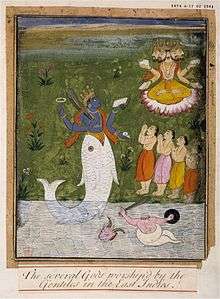
The Goddess Durga leading the Eight Matrikas in battle against the demon Raktabija, from Devi Mahatmya, in Markandeya Purana.
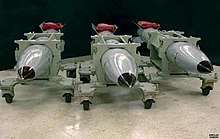
In the Puranas it was predicted that toward the end of Kali Yuga humanity would be driven to acts of madness... But how do you explain to people that their leaders and their teachers are insane? ...such mental confusion fully corresponds with the end of Kali Yuga... The Thinker warned, “Do not fall into madness.” ~Agni Yoga

It is curious to see how prophetic in almost all things was the writer of Vishnu Purâna when foretelling to Maitreya some of the dark influences and sins of this Kali Yug. For after saying that the “barbarians” will be masters of the banks… There will be contemporary monarchs, reigning over the earth— kings of churlish spirit, violent temper, and ever addicted to falsehood and wickedness... Property alone will confer rank; wealth will be the only source of devotion; passion will be the sole bond of union between the sexes... women will be objects merely of sensual gratification. ~H.P. Blavatsky
The Kalki Avatar... the final incarnation of Vishnu in the current Maha Yuga, foretold to appear at the end of Kali Yuga, the current epoch.
Maitreya corresponds to the Kalki Avatar in Hinduism (the "White Horse Avatar"—see the Revelation of St. John), and to the Messiahs of all nations... ~Helena Roerich
Puranas (Sanskrit: पुराण purāṇa, "of ancient times") are ancient Hindu texts eulogizing various deities, primarily the divine Trimurti God in Hinduism through divine stories.
Quotes
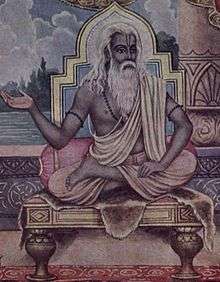
Sri Swami Sivananda: Vyasa is the compiler of the Puranas from age to age; and for this age, he is Krishna-Dvaipayana, the son of Parasara.
- The Puranas are post-Vedic texts which typically contain a complete narrative of the history of the Universe from creation to destruction, genealogies of the kings, heroes and demigods, and descriptions of Hindu cosmology and geography. There are 18 canonical Puranas, divided into three categories, each named after a deity: Brahma, Vishnu and Shiva. There are also many other works termed Purana, known as 'Upapuranas.
- Sacred Texts, in Hinduism
- Vyasa is the compiler of the Puranas from age to age; and for this age, he is Krishna-Dvaipayana, the son of Parasara.
- The Puranas are authoritative scriptures of the Hindu dharma. Like the “Sruti” (the audible word), the “Smriti” (the divine word remembered) is an authoritative scripture though not of the same order.
- The Puranas are of the same class as the Itihasas (the Ramayana, Mahabharata, etc.). They have five characteristics (Pancha Lakshana), viz., history, cosmology (with various symbolical illustrations of philosophical principles), secondary creation, genealogy of kings, and of Manvantaras (the period of Manu’s rule consisting of 71 celestial Yugas or 308,448,000 years). All the Puranas belong to the class of Suhrit-Sammitas, or the Friendly Treatises, while the Vedas are called the Prabhu-Sammitas or the Commanding Treatises with great authority.
- Sri Swami Sivananda, in "The Puranas"
- The Puranas, the Tantras, and all the other books, even the Vyasa Sutras, are of secondary, or tertiary authority, but primary are the Vedas.

Upinder Singh:...The oldest of the Puranas are the Matsya, Vayu and the Brahmanda and for our purposes, the Vishnu Purana, somewhat later than the first three … the Vedic link also goes back to the earlier statement that the itihasa-purana was the fifth Veda.
- In Puranas, the supreme truth is made known to one and all, including ordinary men, in a very simple manner....There are many Puranas. It is believed that there were approximately 64 Puranas consisting of 18 Mahapuranas, 18 primary Upa Puranas and the rest secondary Upa Puranas.
- Shantha N. Nair, in Echoes of Ancient Indian Wisdom: The Universal Hindu Vision and Its Edifice (1 January 2008), p. 266
- The Mahapuranas contain 400,000 slokas. They are four times the size of Mahabharata. In these, six are Satvic or Vaishnava Puranas and glorify Lord Vishnu, six are Rajasic or Brahma Puranas and glorify Lord Brahma, and six are Tamasic or Shiva Puranas and glorify Lord Shiva.
- Shantha N. Nair, in "Echoes of Ancient Indian Wisdom: The Universal Hindu Vision and Its Edifice (1 January 2008)", p. 266
- The Vasihnva Puranas are Vishnu Purana, Naradiya Purana, Vamana Purana, Matsya Purana, Garuda Purana, and Shrimat Bhagavata Purana.
- Shantha N. Nair, in "Echoes of Ancient Indian Wisdom: The Universal Hindu Vision and Its Edifice (1 January 2008)", p. 266
- The Brahma Puranas that glorify Brahma are Brahma Purana, Bhavishya Purana, Agni Purana, Brahmavaivarta Purana, Brahmanda Purana, and Padma Purana.
- Shantha N. Nair, in "Echoes of Ancient Indian Wisdom: The Universal Hindu Vision and Its Edifice (1 January 2008)", p. 266
- The Shiva Puranas are Shiva Purana, Linga Purana, Kurma Purana, Markandeya Purana, Skanda Purana, and Varaha Purana.
- Shantha N. Nair, in "Echoes of Ancient Indian Wisdom: The Universal Hindu Vision and Its Edifice (1 January 2008)", p. 266
- According to Puranas, there are five characteristic features or subjects dealt with in each Maha Purana and these are: Sarga – the process of creation of Universe; Pratisarga – the periodical process of destruction and creation; Manvantara – the various eras; Vamsa – the histories of the solar and lunar dynasties; and Vamsanucharita – the royal lineage.
- Shantha N. Nair, in "Echoes of Ancient Indian Wisdom: The Universal Hindu Vision and Its Edifice (1 January 2008)", p. 266
- The 18 Mahapuranas (great Puranas), as the origins of the Puranas, may have overlapped to some extent with the Vedas, but their composition stretched forward into the 4th-5th centuries,... the earliest parts of the Puranic genealogies are either entirely or partly w:Mythicalmythical. The oldest of the Puranas are the Matsya, Vayu and the Brahmanda and for our purposes, the Vishnu Purana, somewhat later than the first three … the Vedic link also goes back to the earlier statement that the itihasa-purana was the fifth Veda.
- If the Purana written by Vyasa were still existing, then it would be honoured as a “Sruti”. In the absence of this Purana and the one written by Lomaharshana, the eighteen Puranas that still exist cannot all be given the same place of honour; among them, the Vishnu and the Bhagwata Purana composed by accomplished yogis are definitely more precious and we must recognise that the Markandeya Purana written by a sage devoted to spiritual pursuits is more profound in Knowledge than either the Shiva or the Agni Purana.
- Sri Aurobindo, in "Sri Aurobindo Writings in Bengali Translated into English".
- The Puranas are the most important among the “Smritis”. The spiritual knowledge contained in the Upanishads has, in the Puranas, been transformed into fiction and metaphors; we find in them much useful information on Indian history, the gradual growth and expression of the Hindu dharma, the condition of the society in ancient times, social customs, religious ceremonies, Yogic methods of discipline and ways of thinking.
- Sri Aurobindo, in "Sri Aurobindo Writings in Bengali Translated into English".
- The composers of the Puranas are either accomplished yogis or seekers of Truth. The Knowledge and spiritual realisations obtained by their sadhana remain recorded in the respective Puranas. The Vedas and the Upanishads are the fundamental scriptures of the Hindu religion, the Puranas are commentaries on these scriptures.
- Sri Aurobindo, in "Sri Aurobindo Writings in Bengali Translated into English".
- The division created by the English educated scholars who separate the Vedas and the Upanishads from the Puranas and thus make a distinction between the Vedic dharma and the Puranic dharma is a mistake born of ignorance. The Puranas are accepted as an authority on the Hindu dharma because they explain the knowledge contained in the Veda and the Upanishads to the average man, comment upon it, discuss it at great length and endeavour to apply it to the commonplace details of life.
- Sri Aurobindo, in "Sri Aurobindo Writings in Bengali Translated into English".
- The Purana carry on propaganda in favour of a particular deity or a place sacred to that deity, and are sectarian. … The Vayu, Brahmanda, Matsya, and the Vishnu Puranas give ancient royal genealogies. The original Puranas existed long before the Christian era, were revised and modified in later times and chapters on Hindu rites and customs were added to them. They attempted to being Vaishnavism and Saivism within the orthodoxy and combined new doctrines with Vedic rituals, ...
- R. K. Dwivedi, et all, in A history of the Guptas, political & cultural {1985), p. 122
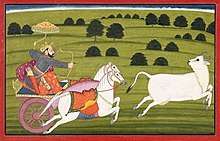
An episode from the Śrīmad Bhāgavatam.
- All the Vedic literature and the Purāṇas are meant for conquering the darkest region of material existence. The living being is in the state of forgetfulness of his relation with God due to his being overly attracted to material sense gratification from time immemorial. His struggle for existence in the material world is perpetual, and it is not possible for him to get out of it by making plans. If he at all wants to conquer this perpetual struggle for existence, he must reestablish his eternal relation with God. And one who wants to adopt such remedial measures must take shelter of literature such as the Vedas and the Purāṇas. Some people say that the Purāṇas have no connection with the Vedas. However, the Purāṇas are supplementary explanations of the Vedas intended for different types of men. All men are not equal. There are men who are conducted by the mode of goodness, others who are under the mode of passion and others who are under the mode of ignorance. The Purāṇas are so divided that any class of men can take advantage of them and gradually regain their lost position and get out of the hard struggle for existence.
- The manifestation of unfit elements is great at the end of Kali Yuga. The fiercer Armageddon is, the better it serves as purifier of the dross. (66) The end of Kali Yuga is significant, for many cosmic events are connected with this period... Armageddon was predicted ages ago, and the abnormalities at the end of Kali Yuga were described in the Puranas, but even keen thinkers underestimated those clear indications.However, the unusualness of the events does not impress humanity, whose mental confusion was also predicted ages ago. (106) The significance of Armageddon is little understood. Anyone who knows about the approaching end of Kali Yuga recognizes that it cannot occur without world upheavals. The forces that were particularly powerful during the Black Age must now struggle for survival, and they prefer a general catastrophe to defeat... The tension of spatial currents and the discovery of Primal Energy could not be mentioned in the Puranas even though they were intended for the seeking, advanced thinkers. But both of these conditions have now been manifested in a pronounced form, making the significance of the approaching end of Kali Yuga the more obvious.(127)
- Agni Yoga, Supermundane, (1938)
- It is true that Armageddon is raging and incredible crimes have been committed, but it is also true that against the background of these terrors a speedy evolution rushes onward. Is it possible that people do not see how much of the new is entering life? We should not permit the doubting worldlings to proclaim that the dark forces are victorious. That which belongs to Infinity cannot be conquered.
The Thinker wisely encouraged His disciples, and prophesied the victory of the Forces of Light. (259) In the Puranas it was predicted that toward the end of Kali Yuga humanity would be driven to acts of madness. It is very dangerous that people do not recognize this state, for while it is possible to cure a patient who does not resist treatment, if he struggles against it the beneficial effects of the medicine will be diminished. But how do you explain to people that their leaders and their teachers are insane? ...such mental confusion fully corresponds with the end of Kali Yuga... Most people hate the messenger who brings knowledge... let them at least remember the warning that humanity is acting insanely. The Thinker warned, “Do not fall into madness.” (285)- Agni Yoga, Supermundane, (1938)
Bhagavata Purana
- The Srimad Bhagavatam is the very essence of all the Vedanta literature. One who has enjoyed the nectar of its rasa never has any desire for anything else.
- Rūpagosvāmī (2003), in Twelfth canto of Bhagavat Purana (12.13.15), in The Bhaktirasāmṛtasindhu of Rūpa Gosvāmin, p. 65
- The Srimad Bhagavatam teaches nine primary forms of bhakti, as explained by Prahlada as:(1) śravaṇa ("listening" to the scriptural stories of Kṛṣṇa and his companions), (2) kīrtana ("praising," usually refers to ecstatic group singing), (3) smaraṇa ("remembering" or fixing the mind on Viṣṇu), (4) pāda-sevana (rendering service), (5) arcana (worshiping an image), (6) vandana (paying homage), (7) dāsya (servitude), (8) sākhya (friendship), and (9) ātma-nivedana (complete surrender of the self).
- Bhagavata Purana (from Bhagavata Purana, 7.5.23-24) quoted in Acting as a Way of Salvation: A Study of Rāgānugā Bhakti Sādhana, p. 133
- This Bhāgavatam is the essence of all Vedanta philosophy because its subject matter is the Absolute Truth, which, while nondifferent from the spirit soul, is the ultimate reality, one without a second. The goal of this literature is exclusive devotional service unto that Supreme Truth.(BP 12.13.12)
- Bhaktivedanatha Data Base, in SB 12.13: The Glories of Śrīmad-Bhāgavatam Bhaktivedanatha Data Base
Vishnu Purana
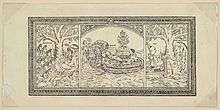
H.H.Wilson:The Narada or Naradiya Purana is where Narada has described the duties which were observed in Vrihat Kalpa, that is called Naradiya, having twenty five thousand stanzas....It is communicated by Narada to the rishis in Naimisharanya, on the Gomati River.
- Vishnu Purana is one of the eighteen traditional puranas, which were an important genre of smriti text, and the repository of much of traditional Indian mythology... Most of the puranas are highly sectarian as is the Vishnu Purana which is focused on the worship of Vishnu. It gives an exhaustive account of Vishnu’s mystic deeds – many of which have become the common mythic currency for many traditional Hindus – as well as instructions for how, where, and when Vishnu is to be worshipped.
- James G. Lochtefeld, in Illustrated Encyclopedia of Hinduism: N-Z (2002), p. 760
- It is a primary text of the Vaishnava branch of Hinduism, and one of the Cnanonical puranas of the Visnhu Category. Among the portions of interest are a cycle of legends of the boyhood deeds of Krishna and Rama.
- Sacred Texts, in "Hinduism".
Naradiya Purana
- The Narada or Naradiya Purana is where Narada has described the duties which were observed in Vrihat Kalpa, that is called Naradiya, having twenty five thousand stanzas....It is communicated by Narada to the rishis in Naimisharanya, on the Gomati River.
Vamana Purana
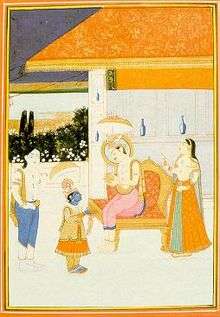
H.H.Wilson:Vamana Purana is that in which the four faced Brahma taught the three objects of existence, as subservient to the account of the greatness of Trivikrama, which treats also of the Shiva Kalpa, and which consists of ten thousand stanzas....
- Vamana Purana is that in which the four faced Brahma taught the three objects of existence, as subservient to the account of the greatness of Trivikrama, which treats also of the Shiva Kalpa, and which consists of ten thousand stanzas. It contains an account of the dwarf incarnation of Vishnu; but it is related by Pulastya to Narada, and extends to but about seven thousand stanzas. Its contents can scarcely establish its claim to the character of a Purana.
- H.H.Wilson, in "Oriental Translation Fund, Volume 52 (Google eBook), Volume 52 (1840)}, P. xivii
Matsya Purana
- Matsya Purana is that in which, for the sake of promulgating the Vedas, Vishnu, in the beginning of the Kalpa related to Manu the story of Narasimha and the events of seven Kalpas, that O, sages know to be the Matsya containing twenty thousand stanzas...the subjects of the Purana were communicated by Vishnu, in the form of a fish to Manu. The Purana, after the usual prologue open with the account of the Matsya or ‘fish’ Avatars of Vishnu, in which he preserves a king named Manu, with the seeds of all things, in an ark, from the waters of the inundation which in the season of Pralaya overspreads the world. This story is told in the Mahabharata, with reference to the Matsya as its authority; from which it might be inferred that the Purana was prior to the poem.
- H.H.Wilson, in "Oriental Translation Fund, Volume 52 (Google eBook), Volume 52 (1840)}, P.li
Garuda Purana
- The Garuda Purana is one of the Vishnu Puranas. It is in the form of a dialog between Vishnu and Garuda, the King of Birds... Portions of the Garuda Purana are used by some Hindus as funeral liturgy…. The Garuda Purana starts with the details of the afterlife. The final part of this text is an appeal to self-knowledge as the key to liberation, going beyond austerities and study of the texts: "The fool, not knowing that the truth is seated in himself, is bewildered by the Shastras,--a foolish goatherd, with the young goat under his arm, peers into the well."
Brahma Purana
- Brahma Purana is the whole of which was formerly repeated by Brahma to Marichi and contains ten thousands stanzas. In all the lists of Puranas, Brahma Purana is placed at the head of the series, and is thence sometimes also entitled to Adi or ‘First’ Purana. It is also designated as Saura, as it is in great part appropriated to the worship of Surya, the ‘sun’. There is a supplementary or concluding section called the Brahmottara Khanda, which contains about three thousand more; but there is every reason to conclude that this a distinct and unconnected work...The immediate narrator of the Brahma Purana is Lomaharshana, who communicates it to the Rishis or sages assembled at Naimisharanya, as it was originally revealed by Brahma, not to Marichi as the Matsya affirms, but to Daksha, another of the patriarchs: hence the denomination of the Brahma Purana.
- H.H.Wilson, in "Oriental Translation Fund, Volume 52 (Google eBook), Volume 52 (1840)}, P.xvi
Bhavishya Purana
- Bhavishya Purana is the Purana in which Brahma, having described the greatness of the sun, explained to Manu the existence of the world, and the characters of all created things, in the course of the Aghora Kalpa, the stories being for the most part of the events of a future period. It contains fourteen thousand five hundred stanzas. This Purana, as the name implies should be a book of prophesies, foretelling what will be (bhavishyat), as the Matsya Purana intimates.
- H.H.Wilson, in "Oriental Translation Fund, Volume 52 (Google eBook), Volume 52 (1840)}, P.xxxix
Agni Purana
- The cyclopedial character of the Agni Purana, as it is now described, excludes it from any legitimate claims to be regarded as a Purana, and proves that its origin cannot be remote. It is subsequent to the Itihasas; to the chief works on grammar, rhetoric, and medicine; and to the introduction of the Tantrika worship of Devi. When this latter took place is yet far from determined, but there is every probability that it dates long after the beginning of our era. The materials of the Agni Purana are however, no doubt of some antiquity. The medicine of Sushruta is considerably older than the ninth century; and the grammar of Panini probably precedes Christianity. The chapters on archery and arms, and on regal administration, are also distinguished by an entirely Hindu character, and must have been written long anterior to the Mohammedan invasion. So far the Agni Purana is valuable, as embodying and preserving relics of antiquity, although compiled at a more recent date.
- H.H.Wilson, in "Oriental Translation Fund, Volume 52 (Google eBook), Volume 52 (1840)}, p. xxxviii
Brahma Vaivarta Purana
- The knowers of ancient things call this Purana Brahma Vaivarta because in it Brahman (I Khanda [chapter]) and the Universe (II Khanda) are unfolded by Krishna. The actual structure of the Brahma and the Prakriti khandas, is a further corroboration that in the word ‘Brahma-Vivarta’ what is meant is Brahman and not Brahma. It is the Purana of manifested Brahmin, which seems to be comprehensive of all topics of the Purana.
- Swami Parmeshwaranand, in Encyclopaedic Dictionary of Puranas, Volume 1, p. 223
- Radha’s elevated status, her role as a cosmic queen equal to or superior Krishna giving her a central role in the cosmogony in the Brahma Vivarta Purana...As creator of the universe we find Radha playing a role that is extremely atypical of her earlier history, the role of a mother. In the Brahma Vaivarta Purana, however, she is often called by names that suggest that her motherly role, vis-à-vis the created world. She is called mother of Vishnu, mother of the world, and mother of all.
- David R. Kinsley, in Hindu Goddesses: Visions of the Divine Feminine in the Hindu Religious Tradition (19 June 1988), p. 93
Brahmananda Purana
- Brahmananda Purana, has declared in twelve thousand two hundred verses, the magnificence of the egg of Brahma, and in which an account of the future Kalpa is contained, as was revealed by Brahma. It is usually considered to be in much the same predicament as Skanda, no longer procurable in a collective body, but represented by a variety of Khandas and Mahatmyas, professing to be derived from it.
- H.H.Wilson, in "Oriental Translation Fund, Volume 52 (Google eBook), Volume 52 (1840)}, p. liv
Padma Purana
- Padma Purana is that which contains an account of the period when the world was a golden lotus (padma)), and of all the occurrences of that time, is therefore called Padma by the wise. It contains fifty five thousand stanzas. The second Purana in the usual lists is always Padma, a very voluminous work, containing according to its own statement, as well as of other authorities fifty-five thousand slokas; an amount not far from the truth. These are divided amongst five books or Khandas: 1. Srishti Khanda, or section on creation; 2. the Bhumi Khanda, description of the earth; 3. the Swarga Khanda, chapter on heaven; 4. the Patala Khanda, chapters on regions below the earth; and 5. The Uttara Khanda, last or supplementary chapter. There is also current a sixth division, the Kriya Yoga Sara, a treatise on the practice of devotion.
- H.H.Wilson, in "Oriental Translation Fund, Volume 52 (Google eBook), Volume 52 (1840)}, p. xviii
Shiva Purana
%2C_folio_3_from_the_Shiva_Purana%2C_c._1828.jpg)
James G. Lochtefeld:...It gives an exhaustive account Shiva’s mythic deeds – many of which have become the common mythic currency for many traditional Hindus – as well as instructions for how, where, and when Shiva is to be worshipped.
- Most of the puranas are highly sectarian as is the Shiva Purana, which is one of the longer and larger puranas. It gives an exhaustive account Shiva’s mythic deeds – many of which have become the common mythic currency for many traditional Hindus – as well as instructions for how, where, and when Shiva is to be worshipped.
- James G. Lochtefeld, in "Illustrated Encyclopedia of Hinduism: N-Z (2002)", p. 637
Linga Purana
B.K. Chaturvedi: Linga Purana, listed eleven in the order of composition, enunciates many rituals in the text with legends and stories that date back to a hoary period. It gives details of Shiva Puja ...
- Linga Purana is where Maheshwara, present in the Agni Linga, explained {the objects of life) virtue, wealth, pleasure, and final liberation at the end of the Agni Kalpa, and this Purana, consists of eleven thousand stanzas. It is said to have been originally composed by Brahma and the primitive Linga is a pillar of radiance, in which Maheswara is present.
- Linga Purana, listed eleven in the order of composition, enunciates many rituals in the text with legends and stories that date back to a hoary period. It gives details of Shiva Puja and has two parts – the first part is said to be ‘Poorva Bhaga’ and the other ‘Uttara Bhaga'. It has 180 chapters in the first part and 55 in the second. The language of the Purana is difficult.
- B.K. Chaturvedi, in Linga Purana, p. 7 (Preface).
Kurma Purana
- Kurma Purana is that in which Janardhana, in the form of a tortoise, in the regions under the earth, explained the objects of life – duty, wealth, pleasure, and liberation - in communication with Indradyumna and the Rishis in the proximity of Sakra, which refers to the Lakshmi Kalpa, and contains seventeen thousand stanzas. The first chapter of the Purana gives an account of itself. Suta the narrator says: “This most excellent Kurma Purana is the fifteenth. Samhitas are fourfold, from the variety of the collections. The Brahmi, Bhagavathi, Sauri, and Vaishnavi (Matrika goddess, are well known to the four Sanhitas [religious character] which confer virtue, wealth, pleasure, and liberation…]].
- H.H.Wilson, in "Oriental Translation Fund, Volume 52 (Google eBook), Volume 52 (1840)}, p. xlix.
Markandeya Purana
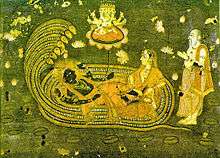
B.K. Chaturvedi:Markandeya Purana along with Bhagavat Purana is considered to be quite a celebrated work. Ranked seventh in the list of Puranas, probably one of the oldest works, its recitation is believed to free one from taints of sin. Named after the sage Markandeya, who acquired its knowledge from Brahma, the creator,...
- Markandeya Purana is that in which, commencing with the story of birds that were acquainted with right and wrong, everything is narrated fully by Markandeya, as it was explained by holy sages, in reply to the question of the Muni. It contains nine thousand verses, This is called from its being, in the first instance, narrated by Markendaya Muni, and, in the second instance place by certain fabulous birds.
- Horace H. Wilson, in "Works:¬Vol. ¬6 : ¬The Vishṅu Purāṅa: a system of Hindu mythology ..., Volume 6 (1864)}, p. Liii
- Markandeya Purana along with Bhagavat Purana is considered to be quite a celebrated work. Ranked seventh in the list of Puranas, probably one of the oldest works, its recitation is believed to free one from taints of sin. Named after the sage Markandeya, who acquired its knowledge from Brahma, the creator, its narration starts with sage Jaimini (author of Mimamsa sutras) approaching the wise birds (Dronaputras appearing as birds residing in the Himalayas) to get answers at the behest of Markandeya. Initially the Purana gets answers to the five basic questions: How was Vishnu born as a mortal? How Draupadi became the wife of five Pandavas? Why did Balabadra undertake the penance (pilgrimage) for having committed brahmanicide (killing of Brahmins) and why were the children of Draupadi destroyed so unceremoniously? These questions cover the whole gamut of ancient history, logic, morality, astronomy and so forth.
- B.K. Chaturvedi (2004), in Markandeya Purana, Preface
Varaha Purana

H.H.Wilson:Varaha Purana is that in which the glory of the great Varaha is predominant, as it was revealed to Earth by Vishnu, in connection, wise Munis, with the Manava Kalpa, and which contains twenty-four thousand verses...
- Varaha Purana is that in which the glory of the great Varaha is predominant, as it was revealed to Earth by Vishnu, in connection, wise Munis, with the ManAva Kalpa, and which contains twenty-four thousand verses...It is narrated by Vishnu as Muni or in the boar incarnation, to the personified Earth. Sumantu, a Muni observed :”The divine Varaha in former times expounded a Purana, for the purpose of solving the perplexity of Earth.”... Like the Linga Purana, it is a religious manual, almost wholly occupied with forms of prayer, and rules for devotional observances, addressed to Vishnu; interspersed with legendary illustrations, most of which are peculiar to itself; though some are taken from the common and ancient stock; many of them, rather incompatibly with the general scope of compilation, relate to the history of Shiva and Durga. A considerable portion of the work is devoted to descriptions. In the sectarianism of the Varaha Purana there is no leaning to the particular adoration of Krishna, nor are the Rathyatra or Janmshtami included amongst the observances enjoined.
- H.H.Wilson, in "Oriental Translation Fund, Volume 52 (Google eBook), Volume 52 (1840)}, p. xlv
Skanda Purana
- One who visits Ayodhya the way enjoined sheds all one’s sins and finds one’s abode in the House of Hari (Hari-mandira). Likewise, ‘for one who takes bath in the Svargadvara and visits the Rama temple (Ramalaya) nothing remains to be done here and he has fulfilled his duty.
- Skanda Purana II, Vaisnava-khanda (2) Badarikasrama-Mahatmya (3) . I.24. (The Ayodhya-Mahatmya refers to Ramajanmasthana once, Janmasthana twice, and Janmabhumi twice. Paying a visit (pradarsana) to the same is said to be infinitely meritorious. Skanda Purana, Ayodhya-Mahatmya.) Quoted from Narain, Harsh (1993). The Ayodhya temple-mosque dispute: Focus on Muslim sources. Delhi: Penman Publishers.
- Skanda Purana is that in which the six faced deity (Skanda) has related the events of the Tatpurusha Kalpa, enlarged with many tales, and subservient to the duties taught by Maheshwara. It is a said to contain eighty-one thousand one hundred stanzas. In a collective form it is not noteable, but in fragments in the shape of Samhitas, Khandas [chapters], and Mahtmyas; the most celebrated of these portions in Hindustan is the Kali Khanda, a very minute description of temples of Shiva in or adjacent to Benares, mixed with directions for worshipping Mahehwara, and a great variety of legends explanatory on its merits, and of the holiness of Kashi. Many of them are puerile and uninteresting, but some are of a higher character.
- H.H.Wilson, in "Oriental Translation Fund, Volume 52 (Google eBook), Volume 52 (1840)}, p. xlv-xlvi
Quotes about the Puranas
- Armageddon was predicted ages ago, and the abnormalities at the end of Kali Yuga were described in the Puranas, but even keen thinkers underestimated those clear indications... (106) ...It is true that Armageddon is raging and incredible crimes have been committed, but it is also true that against the background of these terrors a speedy evolution rushes onward. Is it possible that people do not see how much of the new is entering life? We should not permit the doubting worldlings to proclaim that the dark forces are victorious. That which belongs to Infinity cannot be conquered. (259)
- Agni Yoga, Supermundane, (1938)
- In the Puranas it was predicted that toward the end of Kali Yuga humanity would be driven to acts of madness. It is very dangerous that people do not recognize this state, for while it is possible to cure a patient who does not resist treatment, if he struggles against it the beneficial effects of the medicine will be diminished. But how do you explain to people that their leaders and their teachers are insane? ...such mental confusion fully corresponds with the end of Kali Yuga... Most people hate the messenger who brings knowledge... let them at least remember the warning that humanity is acting insanely. The Thinker warned, “Do not fall into madness.” (285)
- Agni Yoga, Supermundane, (1938)
- We are in the Kali Yuga [a Sanskrit term meaning Dark Age] and its fatal influence is a thousand-fold more powerful in the West than it is in the East; hence the easy preys made by the Powers of the Age of Darkness [evil] in this cyclic struggle, and the many delusions under which the world is now laboring. One of these is the relative facility with which men fancy they can get at the "Gate" and cross the threshold of Occultism without any great sacrifice. It is the dream of most Theosophists, one inspired by desire for Power and personal selfishness, and it is not such feelings that can ever lead them to the coveted goal. For, as well said by one believed to have sacrificed himself for Humanity--"Strait is the gate and narrow is the way which leadeth unto life" eternal, and therefore "few there be that find it." (Matthew 7:14) So strait indeed, that at the bare mention of some of the preliminary difficulties the affrighted Western candidates turn back and retreat with a shudder... Let them stop here and attempt no more in their great weakness. For if, while turning their backs on the narrow gate, they are dragged by their desire for the Occult one step in the direction of the broad and more inviting gates of that golden mystery which glitters in the light of illusion, woe to them!
- Helena Petrovna Blavatsky in Studies in Occultism, (1888)
- As the “ Satya-yuga” is always the first in the series of the four ages or Yugas, so the Kali ever comes the last... Anyhow, it is curious to see how prophetic in almost all things was the writer of Vishnu Purâna when foretelling to Maitreya some of the dark influences and sins of this Kali Yug. For after saying that the “barbarians” will be masters of the banks… he adds: “ There will be contemporary monarchs, reigning over the earth— kings of churlish spirit, violent temper, and ever addicted to falsehood and wickedness. They will inflict death on women, children, and cows; they will seize upon the property of their subjects, and be intent upon the wives of others; they will be of unlimited power, their lives will be short, their desires insatiable... People of various countries intermingling with them, will follow their example; and the barbarians being powerful... in the patronage of the princes, while purer tribes are neglected... Wealth and piety will decrease until the world will be wholly depraved. Property alone will confer rank; wealth will be the only source of devotion; passion will be the sole bond of union between the sexes; falsehood will be the only means of success in litigation; and women will be objects merely of sensual gratification.
- H.P. Blavatsky, in The Secret Doctrine, Vol I, p. 377, (1888)
- I shall quote an interesting passage from The Secret Doctrine taken from the Puranas. "... a man if rich will be reputed pure; dishonesty... will be the universal means of subsistence, weakness the cause of dependence, menace and presumption will be substituted for learning; liberality will be devotion; mutual assent, [will replace] marriage; fine clothes [will be regarded as] dignity. . . . He who is the strongest will reign.. the people, unable to bear the heavy burden, Kara-bhara (the load of taxes) will take refuge among the valleys. . .
- Thus, in the Kali age will decay constantly proceed, until the human race approaches its annihilation (pralaya). . . . When the close of the Kali age shall be nigh, a portion of that divine being which exists, if its own spiritual nature . . . shall descend on Earth . . . as Kalki (Avatar) endowed with the eight superhuman faculties. . . . He will re-establish righteousness on Earth, and the minds of those who live at the end of Kali-Yuga shall be awakened and become as pellucid as crystal. The men who are thus changed. . . shall be the seeds of human beings, and shall give birth to a race who shall follow the laws of the Krita age, (the age of purity). As it is said, 'When the sun and moon and the lunar asterism Tishya and the planet Jupiter are in one mansion the Krita (or Satya) age shall return.'
- Helena Roerich, Letters of Helena Roerich II, 19 March 1936 »
- There is actual mention in the Samhita and Brahmana literature of a work called Purana.
- The (hymns of the) Atharvangiras are the bees, the Itihasa-Purana is the flower.
- Chandyoga Upanishad. III 4-1., quoted in S. Talageri, The Aryan Invasion Theory and Indian Nationalism (1993)
- The Atharvaveda and the Itihasa-Veda are also Vedas.
- Kautilya's Arthasastra,, quoted in S. Talageri, The Aryan Invasion Theory and Indian Nationalism (1993)
- They alone contain something like a continuous historical narrative, and it is absurd to suppose that the elaborate royal genealogies were all merely figments of imagination or a tissue of falsehoods.
- There is nothing in them (Puranic accounts), as far as I am aware, really inconsistent with the most ancient book we possess, namely, the Rigveda, and they throw much light thereon, and on all problems concerning ancient India.
- Ancient Indian Historical Tradition by F.E. Pargiter, Motilal Banarsidas, Delhi-Varanasi-Patna, 1962. Quoted in Talageri, S. (2000). The Rigveda: A historical analysis. New Delhi: Aditya Prakashan.
See Also
External links
- The Brahma Purana English translation by G. P. Bhatt, 1955
- The Garuda Purana English translation by M. N. Dutt, 1908
- The Vishnu Purana English translation by H. H. Wilson, 1840
- The Markandeya Purana English translation by F. E. Pargiter, 1904
- All 18 Major Puranas (pdf)
This article is issued from
Wikiquote.
The text is licensed under Creative
Commons - Attribution - Sharealike.
Additional terms may apply for the media files.
